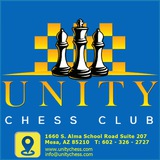🔹🔺 The interesting and tactical moments of the ARG-ch Final 2017, Buenos Aires🔹🔺
📘 20.Nh2
With the idea of a wing attack by playing Rf1 and f4. Boris Spassky applied this idea in his game in 1977.
Another idea in this position would be doubling the rooks on the a file with Ra3 and then axb5 controling the open file.
With the idea of a wing attack by playing Rf1 and f4. Boris Spassky applied this idea in his game in 1977.
Another idea in this position would be doubling the rooks on the a file with Ra3 and then axb5 controling the open file.
📘 The white pieces are placed on good squares. The rooks are controling the f file, the queen is in the harmony with the bishop on the c1-h6 diagonal, light color bishop is on the same diagonal of the Black king, and active knight on g3. There is just one piece left behind! The knight on h2. So 26.Nf3! with the idea of centralizing the knight on d4.
📘 2...b5
Preventing c4 and getting space in the queenside.
This move played for the first time in 1931 by Herman Steiner U.S. champion in 1948. Also great champions like Spassky in 1966, Tal in 1967, and Smyslov and Karpov in 1972. Today, this is a favourite move of many famous grandmasters.
Preventing c4 and getting space in the queenside.
This move played for the first time in 1931 by Herman Steiner U.S. champion in 1948. Also great champions like Spassky in 1966, Tal in 1967, and Smyslov and Karpov in 1972. Today, this is a favourite move of many famous grandmasters.
📕 #73
11.Qd2!?N
Kortschnoj's novelty came as a shocking surprise to young Karpov!
11...Nxd5?! (11...Na5 can be an intetesting novelty; another option which has been played by Banikas twice is 11...Ba6 12.b3 Nxd5 13.Bxd5 Bxg5 14.Qxg5 Nb4 15.Bxa8 Nc2+ 16.Kd1 7Qxa8 17.Kxc2 Qxh1 with slightly better chances for white in a middlegame with opposite colored bishops.)
12. Bxd5 Rb8?? (GM Fontaine made a draw against Tkachiev by playing Matanovic's suggestion, 12...Bxg5)
12.Nxh7!! +-
This knight is untouchable!
If 12...Kxh7 13.Qh6+ Kg8 14.Qxg6 Kh8 15.Qh6 Kg6 16.Be4! f5 17.Bd5 with an inevitable checkmate.
11.Qd2!?N
Kortschnoj's novelty came as a shocking surprise to young Karpov!
11...Nxd5?! (11...Na5 can be an intetesting novelty; another option which has been played by Banikas twice is 11...Ba6 12.b3 Nxd5 13.Bxd5 Bxg5 14.Qxg5 Nb4 15.Bxa8 Nc2+ 16.Kd1 7Qxa8 17.Kxc2 Qxh1 with slightly better chances for white in a middlegame with opposite colored bishops.)
12. Bxd5 Rb8?? (GM Fontaine made a draw against Tkachiev by playing Matanovic's suggestion, 12...Bxg5)
12.Nxh7!! +-
This knight is untouchable!
If 12...Kxh7 13.Qh6+ Kg8 14.Qxg6 Kh8 15.Qh6 Kg6 16.Be4! f5 17.Bd5 with an inevitable checkmate.
📕 #74
One of the most important concepts that have been deeply discussed by Nimzowitsch is blockade. White manages to blockade his opponent's pawns by establishing his pieces on the d4 and e5 squares just in front of black's central pawns.
9.b4! Be7 10.Bf4! fxe5 11.Nxe5 Nxe5 12.Bxe5 Nf6 13.Nd2 0-0 14.Nf3 Bd6 15.Qe2 Rac8 16.Bd4 Qc7 17.Ne5 +/-
A dream position for Nimzowitsch!
One of the most important concepts that have been deeply discussed by Nimzowitsch is blockade. White manages to blockade his opponent's pawns by establishing his pieces on the d4 and e5 squares just in front of black's central pawns.
9.b4! Be7 10.Bf4! fxe5 11.Nxe5 Nxe5 12.Bxe5 Nf6 13.Nd2 0-0 14.Nf3 Bd6 15.Qe2 Rac8 16.Bd4 Qc7 17.Ne5 +/-
A dream position for Nimzowitsch!
